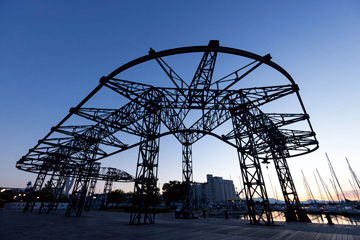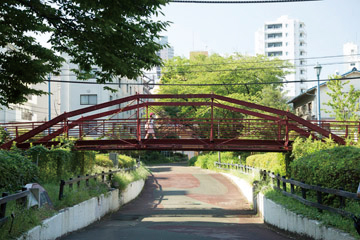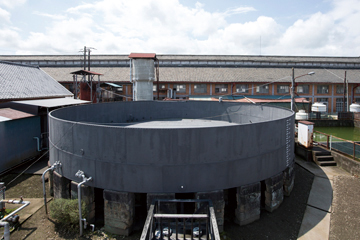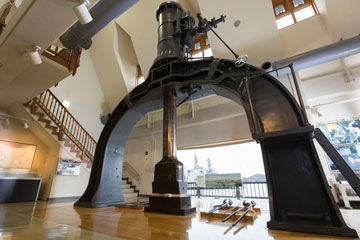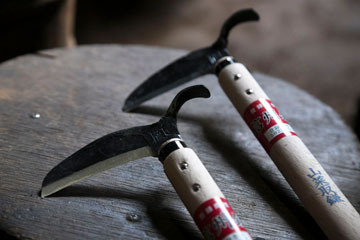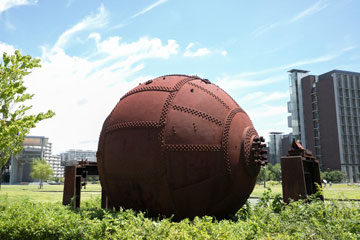2020 METAL CULTURE Koto
Hachiman Bridge
Value One Autumn 2020 No.70
-
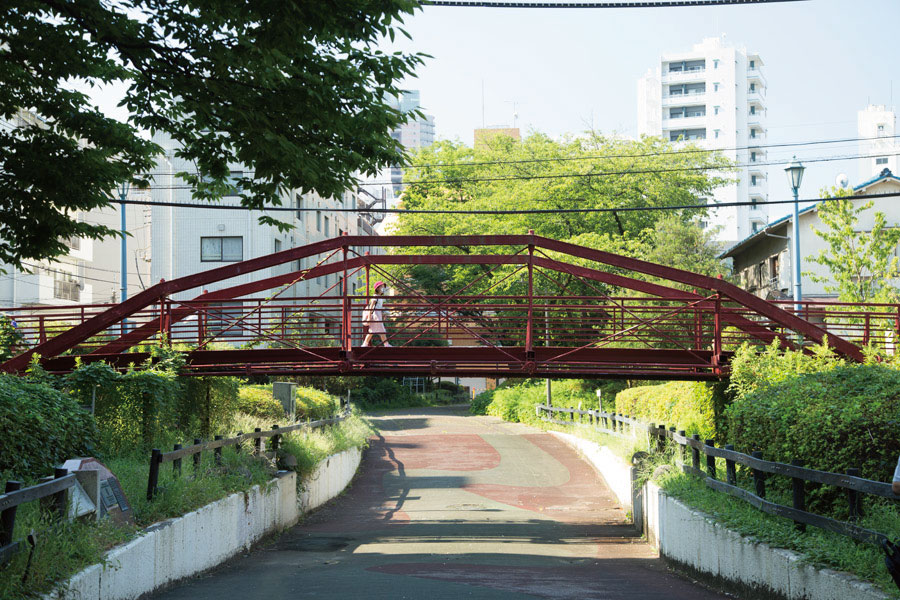
- Hachiman Bridge is still in service after over 140 years
The First Iron Bridge Built in Japan
Monzennakacho in Tokyo is a popular sightseeing area full of shitamachi ambiance. The sights here where the common people of Edo lived include Tomioka Hachiman Shrine, Fukagawa Fudoson Temple, and other historical shrines and temples.
One of those sights is Hachiman Bridge—a small red pedestrian bridge over the Hachimanbori walkway near Tomioka Hachiman Shrine. This was the first iron bridge ever constructed in Japan. It was built at the request of Tokyo Prefecture at the Akabane factory of the Ministry of Public Works in 1878, the eleventh year of the Meiji Era.
-
Originally called Danjo Bridge, it was built to span the Kaede River near Kyobashi in what is now Chuo City. When Tokyo underwent redevelopment after the Great Kanto Earthquake in 1923, the bridge was relocated to its current spot and renamed Hachiman Bridge.
At around 15 meters long and two meters wide, the bridge is small. At a time when iron bridges were rare here, however, it stood as a symbol of Japan’s new industrial advancements.
Hachiman Bridge was built with a mixture of cast iron and wrought iron. The arches’ upper chords are cast iron, and the lower chords and vertical and diagonal components are wrought iron. Although cast iron was being manufactured domestically then, wrought-iron manufacturing technology was lacking, so materials imported from overseas were apparently used. The bridge embodies the dawn of iron bridge technology in Japan—evolving from cast to wrought iron and on to steel—and is an invaluable part of the country’s industrial heritage. -
-
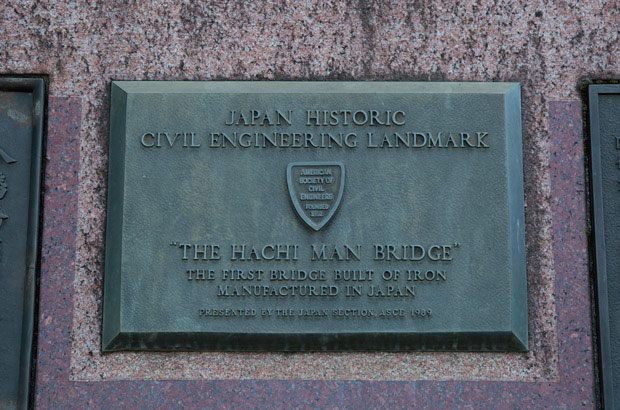
- The plaque honoring the bridge, bestowed by American Society of Civil Engineers
-
One more special characteristic of Hachiman Bridge is its bowstring truss structure, looking like a bow with a string. There are bridges built in the same style in the U.S. and Germany. Hachiman Bridge was also built in the style of the Whipple arch truss invented by American bridge engineer Squire Whipple. Only a few bridges with a Whipple arch truss remain in the U.S., their land of origin. Hachiman Bridge is therefore prized for its historical value, and received an award from the American Society of Civil Engineers in 1989.
Shigenori Horii, the general manager of Osaka Design Division No. 2 of leading bridge fabricator Yokogawa Bridge Corporation and an expert on bridge history, told us: “Iron bridges can be used for more than a century with proper maintenance. Iron bridges are also appealing for their high degree of design freedom and the diverse forms of expression, including power and beauty.”
Elementary school students and office workers from the surrounding community come and go on Hachiman Bridge in the morning and evening. The oldest iron bridge made in Japan will no doubt continue to sustain local residents and employees of area businesses as they go about their daily lives.

